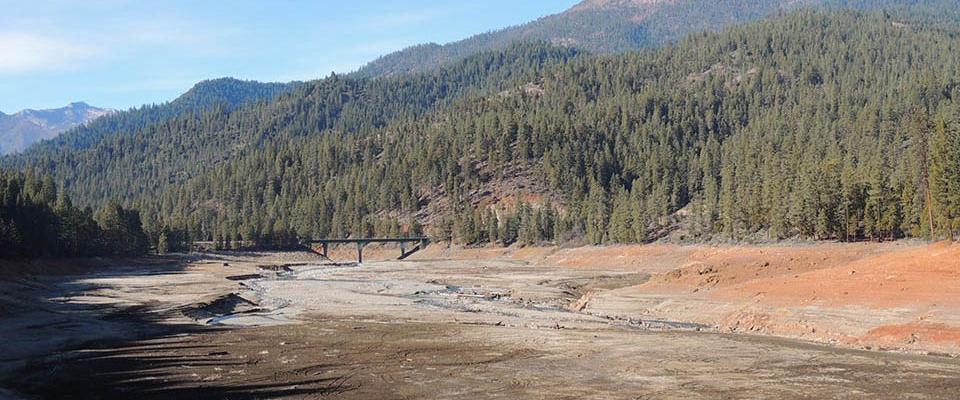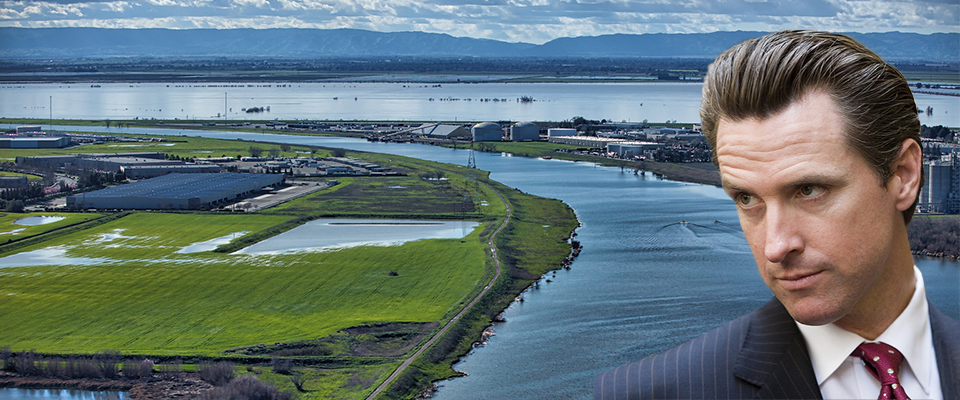This week’s declaration by the US Fish and Wildlife Service and the National Marine Fisheries Service that the massive Delta tunnels proposed by the Jerry Brown administration would not cause the extinction of several imperiled fish species gave a significant boost to the behemoth project. Still, other impediments must be overcome before the digging starts and the concrete flows.
For one, the primary beneficiaries of the project—San Joaquin Valley corporate farms and Southern California urban water districts—will have to pony up most of the money for the scheme, and it’s not yet clear whether they’re willing to shoulder such a burden.

Further, says Gleick, a variety of permits are required before a shovelful of dirt can be turned, and lawsuits from environmentalists, fisheries advocates, and Sacramento-San Joaquin Delta farmers are certainly assured, threatening to throw the project back into limbo. So while tunnels supporters may be heartened by the agencies’ decisions, statements made by some water district officials that excavation could start by 2021 may prove excessively optimistic.
“This certainly can be viewed as a step that moves the project closer, at least to a degree,” says Gleick. “But really, it’s just a step in a very long process, a process that’s sure to extend beyond the Brown administration and the administration after that, and perhaps beyond my lifetime.”
The Delta Tunnels are a tweaked version of the peripheral canal, which Jerry Brown promoted during his first tenure as governor in the 1970s and 80s, and was rejected by voters in a referendum. The new conveyance would consist of two subterranean tunnels, each 35 miles long and four stories high, jointly capable of transporting 9,000 cubic feet of water a second, by any estimation a mighty flow, equivalent to a “big water” kayaking or rafting run.
Brown insists the project is necessary to ensure reliable south state water deliveries and protection of imperiled fish such as the Delta smelt and winter-run Chinook salmon.
Brown insists the project is necessary to ensure reliable south state water deliveries and protection of imperiled fish such as the Delta smelt and winter-run Chinook salmon, which often are captured and macerated in the gigantic state and federal pumps in the southern Delta near Tracy.
Dennis Baldocchi, a professor at Cal’s Department of Environmental Science, Policy, and Management, observes concerns over the Delta’s stability are justified. The Delta consists of a series of canals and sloughs interspersed with reclaimed “islands” that are essentially large holes in the ground ringed by shaky levees, he says.
“The Delta was a great place for agriculture in the late 19th century and early 20th century,” says Baldocchi. “Large tracts were drained and levees were put up, and everything was largely at sea level.”
But the Delta is situated on peat soils that rapidly oxidize when exposed to air, says Baldocchi, who grew up in the region and currently is conducting extensive wetlands restoration projects on Twitchell and Sherman Islands. As a result, the farmed tracts are continually sinking, and some are now more than 30 feet below sea level. Since 1980, 27 islands have been partially or wholly flooded.
“It’s at the point now where the soils are so subsided that water is constantly burbling under the levees as ‘boils,’ ” says Baldocchi. “A recent survey found that 11,000 acres of farmland in the Delta are subject to boils. And it’s only going to get worse. The hydrostatic pressure on the levees is a function of height squared, so the risk of catastrophic failure is increased as soils continually oxidize.”
If multiple levees fail in close conjunction, says Baldocchi—a risk compounded by earthquakes on the Hayward Fault or high water events in winter or spring—it likely would create a domino effect that would rapidly change the Delta from a mosaic of reclaimed farmland and waterways to a vast, brackish lake. And since the pumps at Tracy imbibe directly from the south Delta, they’d have to shut down, lest people in Los Angeles turn on their taps and fill their Mr. Coffees with saltwater.
The tunnels would obviate this threat at least partially because they would divert water directly from the Sacramento River north of the Delta to the pumps. Indeed, that’s the primary selling point for the tunnels: Absent a major infrastructure fix that will assure continued delivery of water to Southern California in the event of widespread levee collapse and saltwater intrusion in the Delta, say the project’s supporters, millions of California citizens are at risk of losing basic access to water. That would be a potential public health catastrophe, not an inconvenience. Moreover, billions in farm revenues would be lost, and it would likely be years before full water deliveries to the south state would be reestablished.
But while the tunnels should assure that megafarms and cities won’t have their deliveries disrupted by collapsing levees, they’ll likely do little to improve Delta ecosystems, or even sustain them in their current degraded state. Some habitat restoration projects that are part of the plan will hardly be adequate to bolster dwindling populations of native fish, say experts, and the project will facilitate the extraction of the one thing the Delta needs most: generous freshwater flows. The pipes will be big, observes Gleick, the temptation to use them to their full capacity will be strong, and water contractors ultimately will have a lot of say in how much water goes south. And at a certain point, diversions could impose a fatal calculus on the Delta, transforming it from a moribund system to a dead one.
“As things stand, you can see some potential [environmental] benefits to the project, but it all depends on how it’s operated,” Says Gleick. “Right now, there are no hard-and-fast rules on operation. That has a lot of people worried.”
“The tunnels are a mid-20th century response to a 21st century problem, a $20 billion and 20-to-30 year distraction from the real solutions we need to pursue.”
Moe pointedly, say tunnels critics, the project is an antiquated, and likely ineffective, approach to California’s core water dilemma. Moving water several hundred miles from the north state to the south state will always remain fraught with engineering, environmental and fiscal problems, and it doesn’t address the basic fact that the supply is finite even as demand skyrockets. California needs to diversify its water options, says Gleick, and live within the inherent limits of the resource.
“The tunnels are a mid-20th century response to a 21st century problem, a $20 billion and 20-to-30 year distraction from the real solutions we need to pursue,” Gleick says. “We just came through a five-year drought, and some lessons were brought home. Water conservation and efficiency improvements work. Recycling and storm water capture are critical and effective tools. Agricultural reform is necessary. Every gallon of water that isn’t sent south of the Delta due to an efficiency is a gallon you can store in a reservoir, or return to the ecosystem. If the tunnels had been built ten years ago, they wouldn’t have changed what we did during the drought. The tunnels are a water delivery system. They don’t provide a single drop of new water. There is no new water. And the sooner we acknowledge that, the sooner we can effectively manage our water for the 21st century.”





















